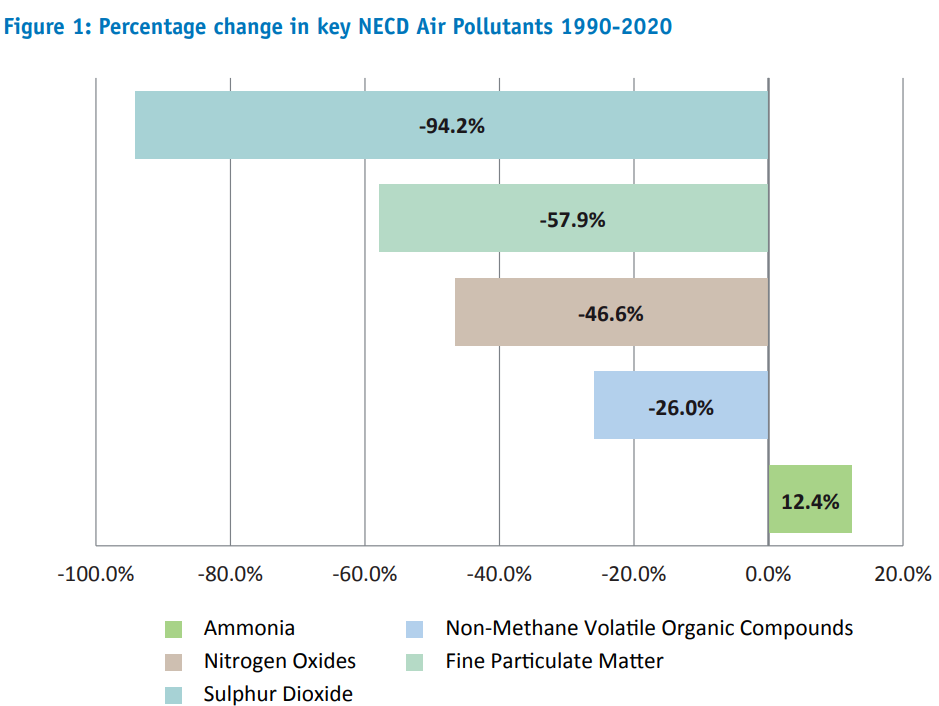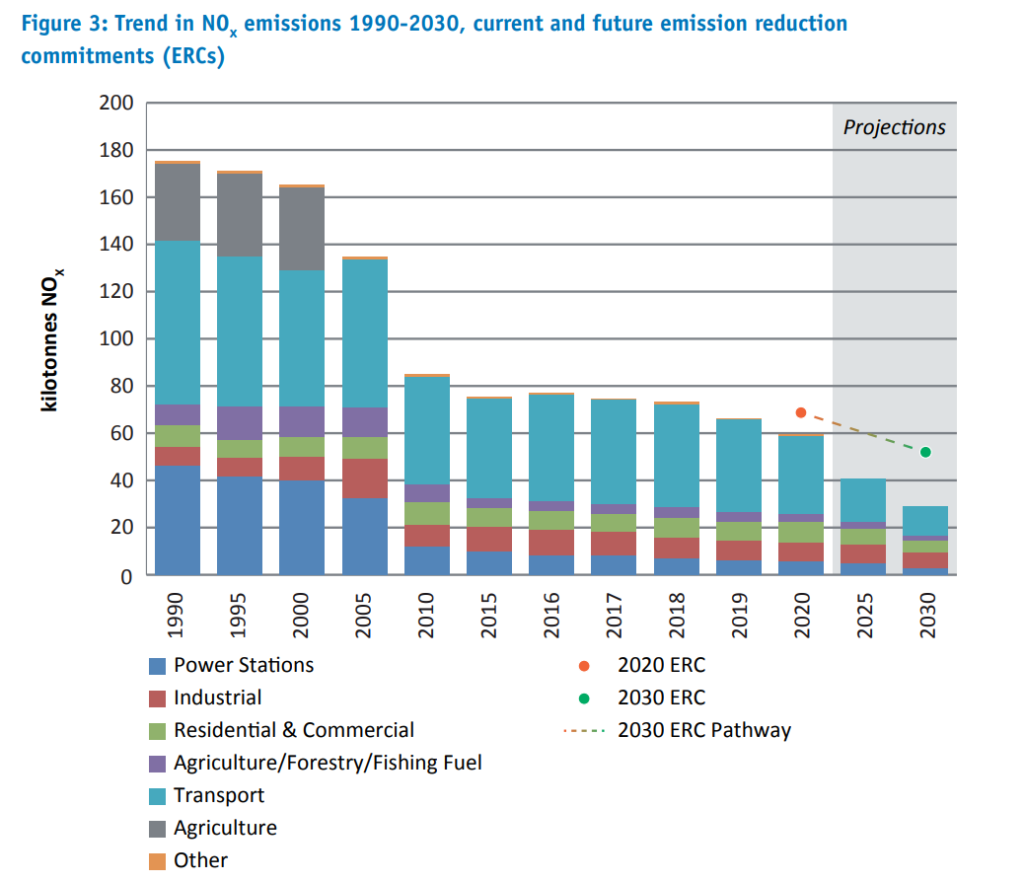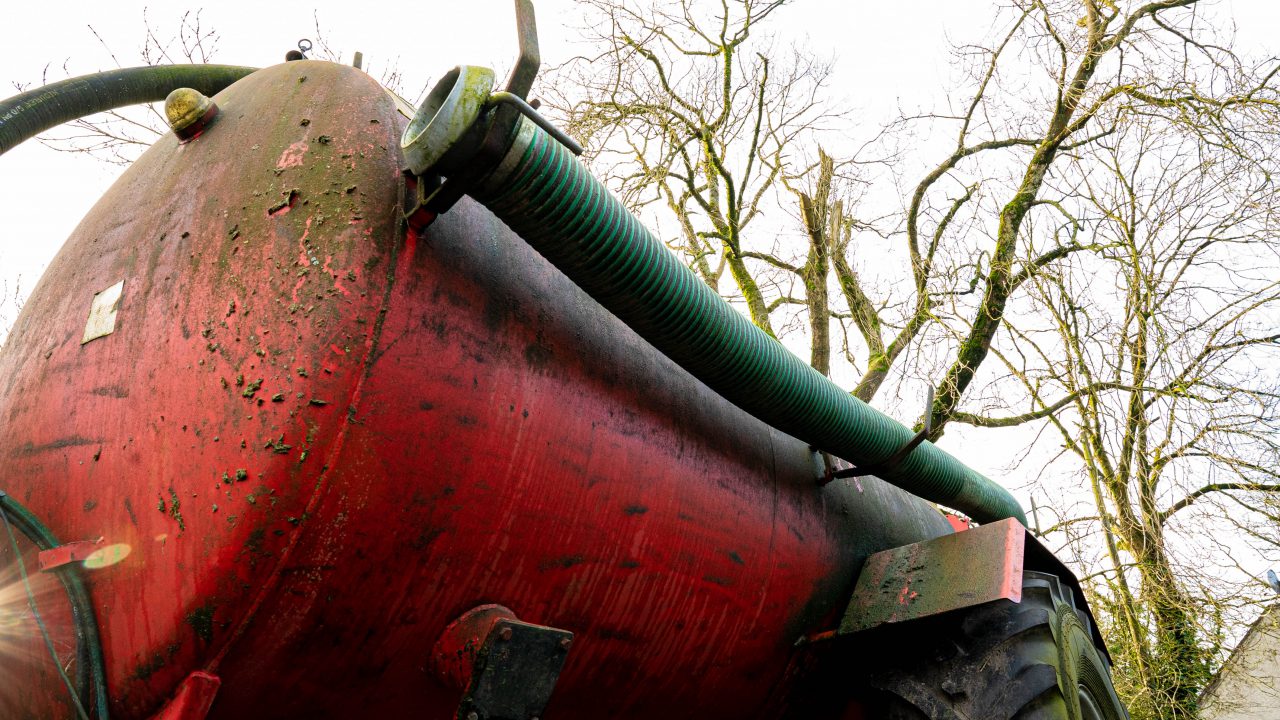Widespread implementation of ammonia reduction technologies in agriculture is needed for Ireland’s compliance with EU air pollutant reduction targets, according to the Environmental Protection Agency (EPA).
The EPA today (Friday, April 22) published a report on its assessment of emissions of five key air pollutants which impact air quality, health and the environment.
The pollutants, which are subject to reduction commitments under the EU National Emission Reduction Commitments (NEC) Directive, are:
- Ammonia;
- Non-methane volatile organic compounds;
- Sulphur dioxide;
- Nitrogen oxides;
- Fine particulate matter e.g. dust from vehicle exhausts, construction, agriculture.
Emissions of other air pollutants and heavy metals, not subject to NEC Directive emission reduction commitments, are also assessed in the report.
EPA report – ammonia emissions
The report shows that although ammonia emissions decreased slightly in 2020, they remained non-compliant with the National Emissions Reduction Commitment (ERC).

Ammonia emissions have now been non-compliant for eight of the past nine years, according to the EPA.
The 2020 data shows that increased use of abatement technologies has led to a reduction in ammonia emissions.
Low emissions spreading techniques were used to apply approximately 36% of cattle slurries in 2020, a greater percentage than had been projected, which avoided over 5,600t of ammonia emissions.
A 62% increase in the uptake of protected urea fertiliser also saved over 500t of ammonia emissions, though usage remains low compared to other fertiliser types.
Transport and other emissions
Emissions of nitrogen oxides (NOx) decreased by 6% in 2020, with transport NOx emissions decreasing by almost 16%. This reflected the reduction in transport activity seen as a result of the Covid-19 restrictions as well as improvement in vehicle NOx abatement technologies.

Despite 7% lower fine particulate matter emissions from the transport sector, overall fine particulate matter emissions increased in 2020 due to higher emissions from home heating.
Despite compliance with NEC Directive reduction commitments, particulate matter levels recorded at EPA ambient air quality monitoring stations in 2020 continued to be a concern in villages, towns and cities.
Emissions of non-methane volatile organic compounds (NMVOCs) decreased by 3% in 2020. This was due to reduced emissions from solvents and the food and beverage industry during 2020.
NMVOCs mostly arise from spirit production in the food and beverage industry, animal manures and fertilisers and solvent use including paints and adhesives.
NMVOC emissions from spirit production alone have increased by 65% over the last decade and effective abatement measures will need to be identified if future emissions reduction targets are to be met, according to the agency.
Emissions of sulphur dioxide continued on their long downward trend in 2020 and have now decreased by over 94% since 1990.
Director of the EPA’s Office of Environmental Sustainability, Sharon Finegan, said: ‘While reductions in ammonia emissions are welcome, much more remains to be done to end Ireland’s continuing non-compliance with NEC Directive targets.
“Full implementation of ammonia abatement measures outlined in agriculture sectoral plans, such as low emission slurry spreading (LESS) and use of inhibited urea fertiliser products, is required to bring Ireland into compliance with the 2030 emission reduction commitment for ammonia.
“Nitrogen losses to both the air and water cause significant environmental pressure without providing any soil fertility benefit,” she added.
The EPA representative also stated that the Nitrates action Programme, Ag Climatise and the draft River Basin Management Plan 2022-2027 all reflect the need to reduce nutrient loss to the environment.
EPA senior manager, Stephen Treacy added: “Measures in the National Air Pollution Control Programme (NAPCP), Clean Air Strategy and draft solid fuel regulations have the potential to decrease national emissions of NO2 and particulate matter and improve outcomes for local air quality and health.
“Implementing these measures will see a further shift away from solid fuel combustion for residential heating and the introduction of new standards.
“Further research and new measures are needed to address emissions of non-methane volatile organic compounds. This particularly applies to sectors where this source of emissions is continuing to grow, such as spirit production within the food and beverage industry,” he added.
